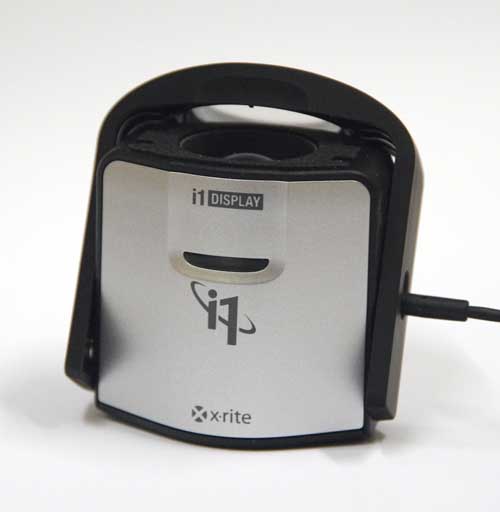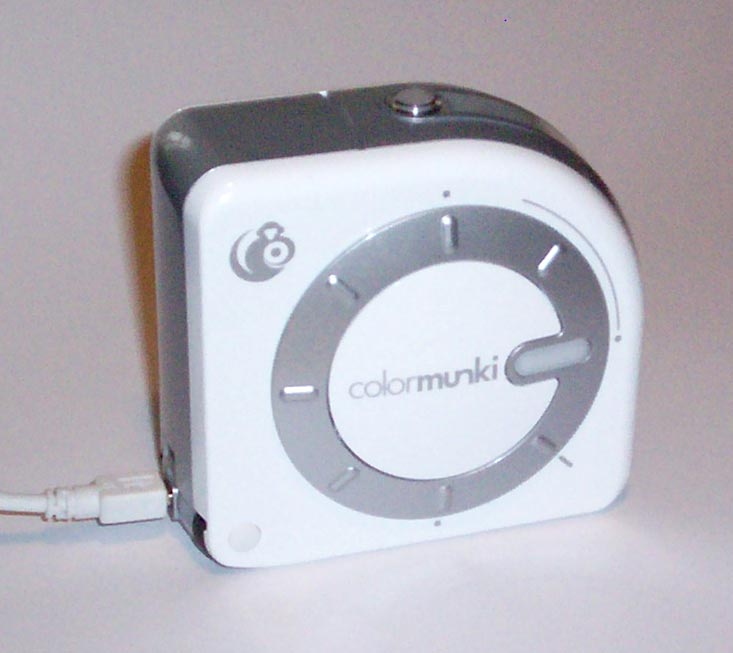Home › Forums › Help and Support › Studio displays management
- This topic has 14 replies, 2 voices, and was last updated 2 years, 10 months ago by
Cedric Paille.
-
AuthorPosts
-
2021-06-17 at 9:59 #30597
Hi,
I’m looking for a way to manage about 150 displays in our Studio. The problem is that those monitors can move from one computer to another, so it’s quite complicated to calibrate/profile each time. I thought that I could make a correction database sorted out by serial number. As I can extract S/N from EDID, I guess it’s possible to ask db to give me the correct ICC/3DLUT file to install, what do you think about it ? We do CGI, so a 3D LUT is more adapted to our needs, and I can include it in our OpenColorIO config, so that’s fine.
I have some other questions in mind :
- Is it better to install a VCGT when using a video 3D LUT, or can I simply apply it in the LUT (with 3D LUT maker) ?
- I guess monitor native colorspace is preferred for calibration ?
- Is it possible to get help with DispcalGUI python code ?
- What do you think about the quality of the X-rite i1 Studio ? Is it adapted to our job ?
Best regards
Calibrite ColorChecker Studio on Amazon
Disclosure: As an Amazon Associate I earn from qualifying purchases.2021-06-17 at 11:53 #30598Another couple of questions that comes in my mind :
- Should I prefer calibrate/profile with tone curve set to “as measured” ?
- We have a lot of HP Z27xG2 at the Studio, 50% of them seem to have a big white-point issue (image is green/blue) and it’s visually perceptible, is there anyone here having the same problem. Here a screenshot of the calibration curve @ 6500K. Those displays have internal calibration device, the color shift is worse after internal calibration. Some sceenshots in attachment (display set to sRGB@6500K). First is factory setting, second after internal calibration.

-
This reply was modified 2 years, 10 months ago by
Cedric Paille.
Attachments:
You must be logged in to view attached files.2021-06-17 at 23:49 #30608Hi,
I’m looking for a way to manage about 150 displays in our Studio. The problem is that those monitors can move from one computer to another, so it’s quite complicated to calibrate/profile each time. I thought that I could make a correction database sorted out by serial number. As I can extract S/N from EDID, I guess it’s possible to ask db to give me the correct ICC/3DLUT file to install, what do you think about it ? We do CGI, so a 3D LUT is more adapted to our needs, and I can include it in our OpenColorIO config, so that’s fine.
I have some other questions in mind :
- Is it better to install a VCGT when using a video 3D LUT, or can I simply apply it in the LUT (with 3D LUT maker) ?
If you want them to be accurate outside application using that software LUT3D, then VCGT should be on ICC at OS level, LUT3D profile should be measured with VCGT applied and LUT3D shoudl not include VCGT.
If you do not need that, only to be accurate on that app you can include it on VCGT.- I guess monitor native colorspace is preferred for calibration ?
For color managed apps yes. Otherwise no
- What do you think about the quality of the X-rite i1 Studio ? Is it adapted to our job ?
Spectrophotometer? You’ll need a colorimeter too and a very fast one if you need to measure such huge amount of displays and making a LUT3D ofr each one (17x17x17 =~ 5000 patches).
You can use i1Studio spectrophotometer at 3nm (Argyllcms high resolution mode) to correct colorimeters.Colorimeter? You’ll need a faster one beacuse the number of displays. Better an i1displaypro or even better a klein K10a
2021-06-17 at 23:54 #30609Another couple of questions that comes in my mind :
- Should I prefer calibrate/profile with tone curve set to “as measured” ?
Depends on answer on 1st question answered above. If you want an accurate ICC system wide with grey corrected ouside your app woth LUT3D support
- We have a lot of HP Z27xG2 at the Studio, 50% of them seem to have a big white-point issue (image is green/blue) and it’s visually perceptible, is there anyone here having the same problem. Here a screenshot of the calibration curve @ 6500K. Those displays have internal calibration device, the color shift is worse after internal calibration. Some sceenshots in attachment (display set to sRGB@6500K). First is factory setting, second after internal calibration.
Measure & diagnose. Remember to use proper colorimeter correction or (xrite spectrophotometers) high res 3nm mode. Use displaycal colorimetr correction database if youdo not have an spectrophotometer, do not use its CCMX, only CCSS 3nm for i1d3. Also some CCSS were created by other users in a wrong way… take a look on “i” button to plot gamut or spectral power distribution, gamut should be native = close to AdobeRGB green, close to P3 red on a current widegamut like that HP is upposed to be.
2021-06-18 at 9:27 #30617Thanks for your reply, so, to clarify, I have 2 types of devices :
- i1 Studio (spectro)
- i1 display (colorimeter)
From what you say, it’s preferable to use the colorimeter (with its correction matrix) for speed issue ?
You can use i1Studio spectrophotometer at 3nm (Argyllcms high resolution mode) to correct colorimeters.
How to do that ?
We only use color managed application, and I made a custom OpenColorIO configuration with monitor color correction LUT at the end of the transforms. Those monitors are used for video only, so OS wide ICC profile is not something I care about. I understand that if I do include the VCGT in the LUT, I must not install the profile (that will upload VCGT) ?
I heard and have the feeling that these colorimeters (i1 display) are going wrong over the years (dye issue), mine is 5 years old. Is this phenomenon recoverable by creating new correction matrix ? And is it a good idea to share such a correction matrix if it’s the case ?
Thanks for the help !
-
This reply was modified 2 years, 10 months ago by
Cedric Paille.
2021-06-18 at 11:24 #30619Thanks for your reply, so, to clarify, I have 2 types of devices :
- i1 Studio (spectro)
- i1 display (colorimeter)
From what you say, it’s preferable to use the colorimeter (with its correction matrix) for speed issue ?
i1d3s have no built in matrix correction for each display type. You have to provide it in software: CCMX (matrix matching your i1Studio), CCSS (specral sample, trusting colorimeter firmware data)
If you use some vendor software like the one from HP you are limited to whatever it provides
You can use i1Studio spectrophotometer at 3nm (Argyllcms high resolution mode) to correct colorimeters.
How to do that ?
Tools / Correction. If you use CCSS share it with comunity for each display model (not for each display unit)
We only use color managed application, and I made a custom OpenColorIO configuration with monitor color correction LUT at the end of the transforms. Those monitors are used for video only, so OS wide ICC profile is not something I care about. I understand that if I do include the VCGT in the LUT, I must not install the profile (that will upload VCGT) ?
In that situation when you make LUT3D with DisplayCAL enable to embed VCGT into LUT3D.
I heard and have the feeling that these colorimeters (i1 display) are going wrong over the years (dye issue), mine is 5 years old. Is this phenomenon recoverable by creating new correction matrix ? And is it a good idea to share such a correction matrix if it’s the case ?
Thanks for the help !
I1d3 have non fasing filters. Older i1Display (i1d2) did fade.
2021-06-18 at 11:29 #30620Oh my mistake!
I understood that you had i1d3 colorimeter (i1displaypro, i1display studio). These devices have non fading filters and support external upgrade to newer technologies.
Now I realize that you own the older one, i1d2 (i1display). It’s filters fade & soon. Also they are very slow.
Upgrading your i1d2 to an i1d3 is HIGHLY RECOMMENDED.
If you do not:
-you need to create a CCMX for each display with your i1Studio and your i1d2. It is only valid for taht colorimeter and that display
-do not use a huge number of patches or it could take ages to measure all displays. A faster colorimeter like an i1Dispalypro is highly recommended.
Again my mistake, I truly believed that you were talking about newer Xrite colorimeters.
2021-06-18 at 11:39 #30622No worries, these are the 2 devices I have :


Just to be sure we’re sync ! The second is a spectro I hope (I bought it as that!)
My question was about high-resolution 3nm sampling, is there an option check in dispcalGUI, or an argument to add to argyllcms (-H) ?
2021-06-18 at 11:48 #30624Then you have an i1d3, the newer one. Non fading filters, very fast, supports both CCSS (“EDR” files in Xrite derived software, they are the same as CCSS but CCSS data is text, and EDR is binary float numbers) and CCMX (matrix). Colorimeter is corrected by software. It has no internal modes.
Regarding high res mode, when you select i1Studio (spectro) on the upper right in device tab you can choose mode. By default it should be high res (3nm), “adaptative high res” or something very close to that name.
If you make a CCSS for each monitor model (not unit), please share it with community uploading it when requested. Also remember to create CCSS with reference display in native gamut mode, not sRGB/AdobeRGB limited gamut modes.
2021-06-18 at 11:51 #30627Found, I totally overlooked the “mode” dropdown list, it’s indeed there ! Thank you again !
2021-06-18 at 11:57 #30628Also remember to create CCSS with reference display in native gamut mode, not sRGB/AdobeRGB limited gamut modes.
Obvious, but yes, good reminder ! That surely was some problem I had when I did some trials.
2021-06-21 at 10:29 #30666BTW, is there a way to make a bunch of 3d LUTs automatically, once calibrated/profiled ? I read the python code, not sure to understand how it’s done so far…
2021-06-21 at 10:44 #30667And, is there a reason we don’t use ICC profiles in video application (speed issue for playback ?)
2021-06-21 at 10:58 #30668BTW, is there a way to make a bunch of 3d LUTs automatically, once calibrated/profiled ? I read the python code, not sure to understand how it’s done so far…
DisplayCAL calls this behind:
https://www.argyllcms.com/doc/collink.html
You can iterate across folder/DB where you store monitor id + ICC path and call that application.
And, is there a reason we don’t use ICC profiles in video application (speed issue for playback ?)
Speed + upload LUT3D to HW, so you can plug whatever device to display and play content accurately.
2021-06-21 at 14:14 #30676Thanks for the tip, launching 3dLutMaker in a terminals shows the command line, awesome 🙂
-
AuthorPosts